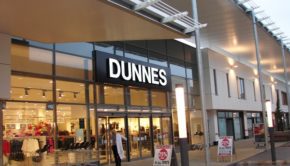The cost of the Celtic Tiger

With the Irish banking meltdown approaching its first anniversary and no obvious relief in sight, Ireland looks unlikely to benefit from any international recovery
11 September 2009
This month the Dáil reassembles to discuss the government’s NAMA legislation. The government hopes that its "bad bank", which will purchase the Irish-owned banks’ bad loans at a discount, will somehow "solve" the banking crisis and get the banks lending again.
Since peaking at €404 billion last November, Irish bank lending has been in free-fall. It had dropped to just €384 billion by the end of July. This means that Irish bank lending is now falling at an annualised rate of almost 8%. And it’s almost certainly going to get a lot, lot worse.
In the decade to the end of 2007 Irish bank lending rose almost seven-fold. However, over the same period Irish bank deposits tripled. As a result over the 10-year period the proportion of Irish bank lending funded by deposits fell from almost 90% to just 45%.
So where did all of this extra money come from?Up until we joined the euro at the beginning of 1999 the amount that the Irish banks could lend to their customers was effectively capped by the amount they held on deposit. While the Irish banks could borrow more money from overseas banks on the London interbank market to lend on to their customers, the fact that these interbank borrowings were in foreign currency made them expensive to repackage as loans to Irish bank customers.
The money tap turns on
Entering the euro suddenly changed all that. The foreign exchange risk associated with interbank borrowing disappeared. We could borrow from banks all over Europe in our new domestic currency, the euro. With the Irish economy representing less than 2% of the eurozone total the amount that the Irish banks could borrow from the interbank markets was, to all intents and purposes, infinite.
Not alone did our membership of the euro remove the cap on Irish bank borrowing, it also halved Irish interest rates. This combination of virtually limitless borrowing capacity and a halving of interest rates fuelled an asset price bubble of truly massive proportions.
House prices more than tripled in our first eight years of euro membership.
We built over two-thirds of a million new houses in the 10 years to the end of 2008, increasing the total stock of housing by more than 50% in the process. It was the same with other forms of construction. Over the past decade the supply of shopping centre and retail park floorspace has increased more than six-fold to 3.3 million square metres.
At the height of the building boom in 2006 construction represented a massive 23% of total economic output, more than three times the EU average.
Now the party’s over
Now the party is over and the bills are coming due. House prices have fallen by more than 24% from their February 2007 peak, while retail rental yields have more than doubled from 2.5 to 6.5% over the same period, as landlords desperately try to find tenants for all of that new floorspace. The office market is equally depressed with up to a fifth of Dublin office space now vacant.
The trials and tribulations of property developer Liam Carroll demonstrated just how desperate the situation has become. When his Zoe Developments group of companies applied to the High Court to appoint an examiner to protect it from its creditors, to whom it owes €1.2 billion, it revealed that if it were forced to sell its property assets immediately the banks could expect to recoup just over a fifth of what they were owed.
The Carroll revelations completely changed the nature of the NAMA debate. The key question about NAMA is what price it will pay the banks for their bad loans? When NAMA was first proposed in last April’s emergency budget there were suggestions that the discount it received could be as little as 15%. The Carroll case has made it clear that such a discount would result in the taxpayer hugely over-paying the banks for their bad loans.
Unfortunately the government still doesn’t seem to get it. John Mulcahy, the property expert who testified on its behalf before the Oireachtas Joint Committee on Finance at the end of last month stated that property prices were now close to the bottom of the cycle. He then went on to say that, from studying previous property cycles, we could expect commercial property prices to recover to 88% of their previous peaks within seven years and residential property prices to climb back to 96%.
Oh come off it. Firstly, does anyone outside the property business really believe that prices have bottomed out? Far more likely are further steep falls. Secondly, the notion that either house or commercial property prices will rebound to within a hair’s breadth of their 2007 peaks by the middle of the next decade strikes me as being fanciful in the extreme.
Time for a wake-up call
Unfortunately Mulcahy’s testimony would seem to indicate that the Government is still contemplating discounts of less than 20% for the bad loans which NAMA purchases from the banks.
Wake up and smell the coffee Brians. Even on the basis of a 30% write-down, the banks will have to book losses of €27 billion on the loans which they sell to NAMA. Not alone is that almost three times the amount which they have already written off against bad loans, it comfortably exceeds their total capital, including the €11 billion of our money which the government has already pumped into AIB, Bank of Ireland and Anglo.
In other words, even modest write-downs on the loans which the banks sell to NAMA, will force the state to inject even more capital into the banks. This will result in majority state ownership, i.e. de facto nationalisation, whether the Government likes it or not.
With the ECB, which is effectively funding the entire NAMA process, after warning the Government not to overpay the banks for bad loans, the Government’s opposition to nationalisation is likely to evaporate in the weeks ahead.
While nationalisation will largely resolve one issue, by removing the argument over the price NAMA pays for the banks’ bad loans, it will also, following the ECB’s intervention in the debate, exacerbate another. If NAMA pays anything resembling market value for the bad loans then the banks are even more bust than we thought and the Government will have to pump in much more capital than had previously been predicted.
Of course NAMA will only buy the banks’ bad loans to builders and property developers. What about all of their other bad loans such as unpaid credit cards, delinquent car loans, overdrawn overdrafts and loans to businesses which have gone bust? Even a 5% write-down in these other loans, which surely errs on the side of optimism, would cost the banks a further €15 billion. Add this to a 30% NAMA discount and the banks are looking at losses of getting on for €45 billion. That’s the equivalent of about 16 months tax revenue.
Taxpayer must shoulder the burden
Nationalisation would leave the taxpayer totally exposed to these extra losses and, in the short-term at least, push the gross national debt up to something like €100 billion. However, nationalisation would at least mean that the taxpayer also captured any upside when the banks were later re-privatised.
In the meantime we will all have to shoulder the burden of our bankrupt banks. This will mean finding 10s of billions more euro to plug the holes in the balance sheets of the banks at a time when tax revenue is already running more than €20 billion behind spending.
A combination of a multi-billion euro bank bailout, massive public spending cuts and hefty tax increases could prove to be a very explosive mixture indeed. Even if we can get through this adjustment process without significant civil unrest, any international recovery is likely to have only a minimal effect on the Irish economy.
Instead we face the prospect of years of grinding deflation. Having squandered the opportunities created by the Celtic Tiger we will now spend most of the next decade paying for the excesses of the past 10 years.



 Print
Print






Fans 0
Followers